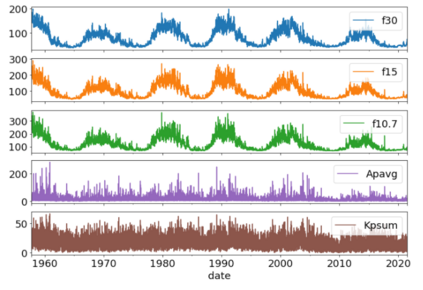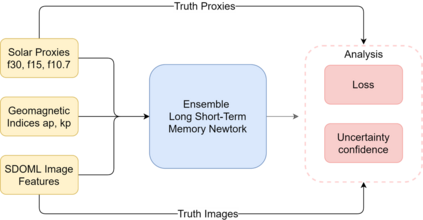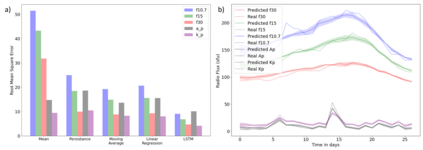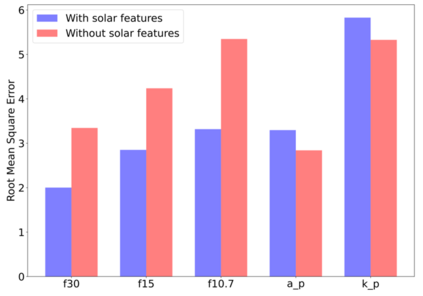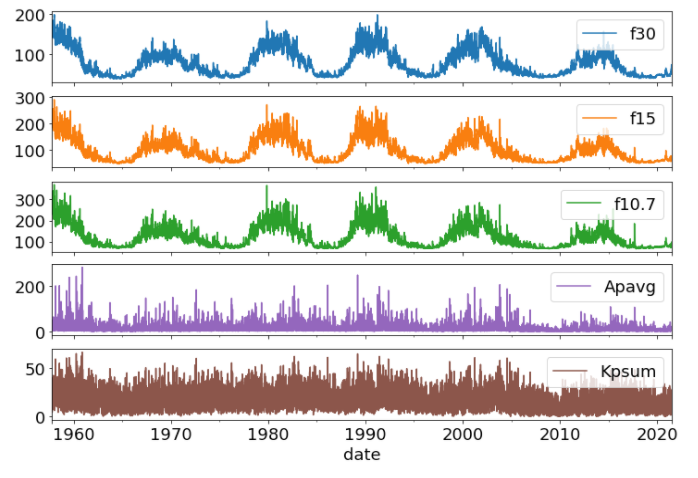Solar radio flux along with geomagnetic indices are important indicators of solar activity and its effects. Extreme solar events such as flares and geomagnetic storms can negatively affect the space environment including satellites in low-Earth orbit. Therefore, forecasting these space weather indices is of great importance in space operations and science. In this study, we propose a model based on long short-term memory neural networks to learn the distribution of time series data with the capability to provide a simultaneous multivariate 27-day forecast of the space weather indices using time series as well as solar image data. We show a 30-40\% improvement of the root mean-square error while including solar image data with time series data compared to using time series data alone. Simple baselines such as a persistence and running average forecasts are also compared with the trained deep neural network models. We also quantify the uncertainty in our prediction using a model ensemble.
翻译:太阳无线电通量以及地磁指数是太阳活动及其影响的重要指标,耀斑和地磁风暴等极端太阳事件可能对空间环境包括低地球轨道卫星产生消极影响,因此,预测这些空间气象指数对空间活动和科学非常重要。在本研究中,我们提出了一个基于长期短期记忆神经网络的模型,以学习时间序列数据的分布,从而有能力利用时间序列和太阳图像数据同时提供多变27天空间天气指数预报。我们显示,根平均差30-40 ⁇ 改进了太阳图像数据,与仅使用时间序列数据相比,包括时间序列数据,同时使用时间序列数据。诸如持久性和运行中平均预测等简单基线也与经过训练的深神经网络模型进行比较。我们还用模型共振量来量化我们预测中的不确定性。

